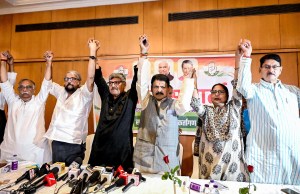Five bulk drugs dereserved
February 4: The Cabinet Committee on Economic Affairs (CCEA) today approved delicensing and dereservation of five bulk drugs. These are V...

February 4: The Cabinet Committee on Economic Affairs (CCEA) today approved delicensing and dereservation of five bulk drugs. These are Vitamin B1, Vitamin B2, Tetracycline, Oxytetracycline and Folice Acid. These drugs were so far reserved for the manufacture by the public sector.
Information and broadcasting minister Pramod Mahajan said in New Delhi that this measure was expected to encourage setting up of the indigenous facilities and give a boost to production. These drugs have been under reservation since 1978.
The measure is also expected to bring down the level of import of the drug and give a fillip to the domestic industry. The public sector IDPL has gone sick, prompting the government to go in for imports. Another reason for the dereservation is that there was shortage of vitamin drugs last year as there were several curbs on imports and IDPL was unable to meet the domestic demand.
The latest government move is also expected to bring in a host of new companies including multinationals to thisarea. The move by government will help the Indian pharmaceutical industry to launch new products at a time when IDPL was unable to meet the demand. Glaxo is a leading player in the vitamins, and freeing of vitamin B1 and Vitamin B2 will help it tap a new segment of the pharmaceutical market. Searle is also expected to enter the segment.
Similarly, Nicholas Piramal was also eyeing the growing vitamin segment. At present, Nicholas does not have a significant presence in these segments. The government move was also prompted by the inability of IDPL to supply vitamins at a time when there was a massive scarcity in 1998.
The Indian pharmaceutical industry through its various associations were demanding the government re-open this segment to the private sector for the benefit of common man.
Analysts say the control — including pricing which will continue to remain — on the pharma sector was perhaps one piece of legislation that is the most abused in the pharmaceutical sector. While the government’s apparentdisregard for its own exclusion criteria is possibly influenced by post-decontrol distrust, industry’s main grouse was that the government does not play the game by its own rules.
In fact, due to price control on these drugs, IDPL was making huge losses and unless the government decontrols, the pharmaceutical industry will take some time before entering into these segment.
Industry experts say that around eight drugs in the Indian market apparently continue to be caught in the web of price control for no specific reason, including all the drugs which have been delicensed today. They add that these drugs, despite satisfying the government’s own criteria for exclusion from control, continue to figure in the list of 74 drugs covered by the Drug Price Control Order (DPCO). They include cloxacillin, ciprofloxacin, theophyllin, ibuprofen and salbutamol.
As per the ORG, in the case of Cloxacillin, there are 65 formulators with the market leader accounting for just a 15 per cent share. For ibuprofen andciprofloxacin, the number of formulators are 84 and 78 respectively and the leader controls just 19 per cent and 14 per cent of the market apiece. These statistics are way above the DPCO inclusion criteria and the Bulk Drugs Manufacturers’ Association has already moved court pressing for exclusion of some of these products.



- 01
- 02
- 03
- 04
- 05




























